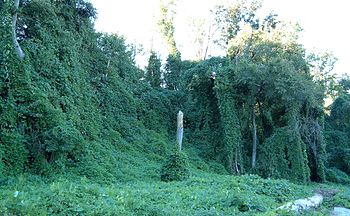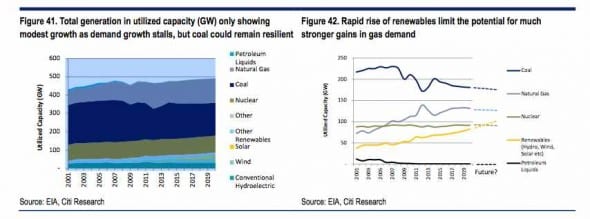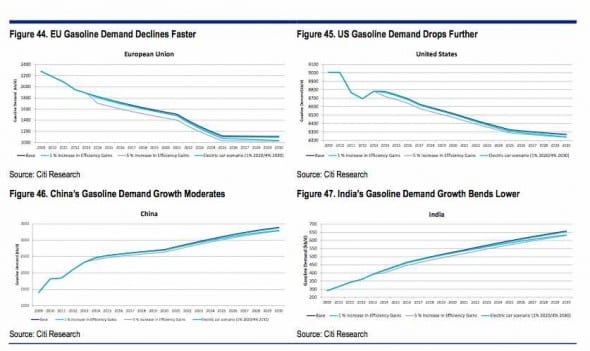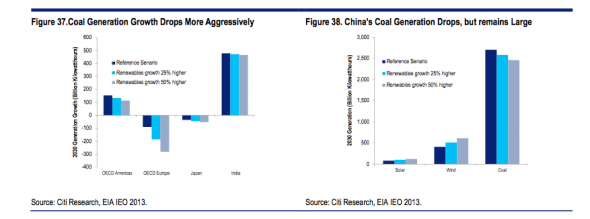by Stockholm Resilience Centre: http://www.stockholmresilience.org/21/research/research-news/10-28-2014-berlin-forefront-of-urban-green.html
The URBES project launches video from Berlin
As one of the cities represented in the Urban Biodiversity and Ecosystem Services project (URBES), coordinated by Stockholm Resilience Centre, Berlin has much to show when it comes to development, policy and strategies for enhancing green areas.
Green initiatives across the city are enabling people from all walks of life to get involved, and through for example local gardening and education projects adults and children alike are connecting to nature and creating spaces of development and prerequisites for social equality.
Berlin is expected to grow by a quarter of a million people in the next 15 years.
The video Berlin - A thriving city embraces its green spaces shows that insightful decision making and actions from city administration, preserving urban biodiversity and giving unrestricted access to urban green and blue space in Berlin, is of great importance for the city’s sustainable future.
A multi-city project
Researchers at the Centre are coordinating the URBES-project and are also conducting studies in Stockholm, as one of the cities connected to the project.
"Together with ICLEI - Local Governments for Sustainability and the International Union for Conservation of Nature (IUCN), we are developing a professional communication and training programme, and will actively link to important policy mechanisms and contribute to global partnership," says Thomas Elmqvist, researcher and project coordinator.
This site has been inspired by the work of Dr David Korten who argues that capitalism is at a critical juncture due to environmental, economic and social breakdown. This site argues for alternatives to capitalism in order to create a better world.
Wednesday, October 29, 2014
Monday, October 27, 2014
Climate Change Is Kicking the Insurance Industry's Butt
 |
| Akira Suwa/Philadelphia Inquirer/ZUMA |
In the months after Hurricane Sandy, insurance companies spooked by rising seas dropped coastal policies in droves.
That could become an increasingly common story, according to the largest-ever survey of how insurance companies are dealing with climate change, released today.
Global warming is increasing the risk of damage to lives and property from natural disasters beyond what many insurers are willing to shoulder. And most insurance companies aren't taking adequate steps to change that trend, the survey found.
That's a problem even if you don't live by the coast: When private insurers back out, the government is left to pick up much of the damage costs; already, the federal flood insurance program is one of the nation's largest fiscal liabilities.
Ceres, an environmental nonprofit, evaluated the climate risk management policies of 330 large insurance companies operating in the United States. The results are worrying. Only nine companies, 3 percent of the total, earned the highest ranking.
The insurers that scored highly on the survey (including several of the world's biggest, such as Munich Re, Swiss Re, and Prudential) were those that have adopted a broad range of climate-conscious products and services, such as rate pricing plans that account for potential climate impacts like storms and fires.
Some insurers are also investing in high-end climate modeling software to better understand where their risks really are. Others offer environmentally friendly plans like mileage-based car insurance and encourage their customers to rebuild damaged homes using green technologies. And some insurance companies are making significant efforts to monitor and reduce their own carbon footprint.
However, the report finds that one major way insurance companies are adjusting to climate change is by not insuring properties that are threatened by it, said Washington State Insurance Commissioner Mike Kreidler, a lead author of the report.
"As a regulator, it's very bad to see markets being abandoned because of the threat that exists," he said.
Certainly the threat is real. Globally, average annual weather-related losses have increased more than tenfold in the last several decades, from $10 billion per year in the period 1974-1983 to $131 billion in 2004-2013, according to the report. The insurance industry is not keeping pace: The proportion of those damages that are insured is steadily declining:

Tim McDonnell
Insurance companies are being squeezed by the dual forces of global warming and urbanization (the latter is especially a problem when it comes to wildfires),
so that the only way to stay profitable in vulnerable areas is to push
rates much higher than they currently are, Munich Re America CEO Tony
Kuczinski said in a press conference call. The easier option, and the
one more frequently chosen, is to simply pull out of risky areas
altogether.
"The view of the industry is that there is not risk-adequate pricing in those areas, and that's why the government is the primary insurer there," he said. "If rates were allowed to move in a direction that's more accurate, it would encourage behavior change."
In other words, one way to limit climate-related losses is by using market forces (i.e., sky-high insurance premiums) to encourage people not to build in places that are likely to be flooded or burned. Government rates, which are set to catch homeowners who fall through the cracks, are generally too low to spur that kind of change.
Experts say that if insurance companies can find a way to remain profitable without abandoning key markets, they will have a significant role to play in helping property owners prepare for climate change. As the industry most finely-attuned to analyzing risk, it's essential for insurers to take a more proactive role in promoting climate adaptation in building codes and other regulations, says Ceres president Mindy Lubber.
"When they act and change, the entire economic sector listens and responds," she said.
Tim McDonnell
Climate Desk Associate Producer Tim McDonnell is Climate Desk's associate producer. For more of his stories, click here. Follow him on Twitter or send him an email at tmcdonnell@motherjones.com.
Saturday, October 25, 2014
Six Green Ministers Announced in New Swedish Government
 |
| English: Åsa Romson (Green Party) is a member of the Swedish Parliament. Svenska: Åsa Romson är svensk riksdagsledamot för Miljöpartiet de Gröna. (Photo credit: Wikipedia) |
Negotiations to form a government in Sweden between the Social Democrats and Miljöpartiet de gröna, the Green party, have ended successfully.
The new Prime Minister Stefan Lövfen has announced his new cabinet, with six ministries going to the Greens.
The result is fantastic news for the Greens, who won 6.9% in national elections on 14 September, and now enter government for the first time.
However, due to the results of the elections, the government they form will be a minority government. The party have said that they are excited about being able to participate in government, but are at the same time aware of the difficult circumstances.
Commenting on the news, European Green Party Co-Chair Reinhard Bütikofer said, "My best congratulations go to the Swedish Greens who’ll be in Government for the first time ever and in particular to Åsa, Isabella, Gustav, Mehmet, Per and Alice who will be Ministers in the new Swedish Government. We’re looking forward to intense cooperation and we wish you the best of success. Your step forward comes as a great encouragement to all European Greens."
European Green Party Co-Chair Monica Frassoni said, "This marks a brand new stage for the Swedish Greens, and we have no doubt that they will be successful as part of this new government. With Åsa, Isabella, Gustav, Mehmet, Per and Alice they have a very strong team of Ministers, and we look forward to cooperating with them as they advance their Green message. We offer the warmest congratulations to the whole party, and to all Greens across Sweden."

The Greens and the Social Democrats have agreed on a framework that will be elaborated on and solidified later on. The Green party's basis for negotiations has been the election manifesto voted on by the Swedish Greens’ congress in May this year (which can be found here).
They have been able to push through many of their demands from the manifesto, but have obviously also had to agree to issues that we wouldn’t have pushed through on their own as part of the coalition agreement.
The new Green ministers are as follows:
Åsa Romson – Minister for Climate and Environment (and Vice Prime Minister)
Gustav Fridolin – Minister for Education
Mehmet Kaplan – Minister for Housing and Urban Development and IT
Per Bolund – Minister for the Financial Market and Consumer Affairs
Alice Bah Kuhnke – Minister for Culture and Democracy
Isabella Lövin – Minister for Development Assistance
Isabella Lövin, who is a member of the European Parliament and a strong voice in the fight for sustainable fishing, will leave her seat in Brussels to take up her new role. She will be replaced by a new MEP from the Swedish Greens.
Her colleagues in the Green Group in the European Parliament have already started to send their congratulations, with Jean Lambert MEP (Green Party of England and Wales) tweeting "Congratulations to Green MEP Isabella Lovin, now named as Development Minister in the new Swedish Govt. EP will miss her energy on Fisheries Reform."
Thursday, October 23, 2014
SPECIAL REPORT: West Midlands Butterfly Denies Causing Hurricane
 by NewsBiscuit: http://www.newsbiscuit.com/2014/10/22/west-midlands-butterfly-denies-causing-hurricane/
by NewsBiscuit: http://www.newsbiscuit.com/2014/10/22/west-midlands-butterfly-denies-causing-hurricane/A butterfly from the Black Country has angrily denied being the cause of Hurricane Gonzalo, the tail end of which battered much of the UK this week.
This all came after meteorologists, using cutting-edge computer modelling, traced the origins of the hurricane back to the single flap of a butterfly’s wings three weeks last Tuesday in a field outside Walsall.
‘It was mental,’ said Red Admiral Roger Bould. ‘I was just fluttering about, as you do, when these boffins turn up and say that I set off a chain of events that caused devastation from Bermuda to Grimsby'.
'Next thing I know, Sky News are reversing their outside broadcast lorries into the field and I’m being accused of everything from hurricanes and typhoons to the next James Blunt album. What am I meant to do, sit watching Channel 4 racing all afternoon and not flapping my wings just in case things go abdomen-up in Australia?’
Bould is actually no stranger to controversy. In April, a Wednesbury housewife had accused him of being a ‘very hungry caterpillar’ who over the course of a single week infiltrated her house then ate one apple, two pears, three plums, four strawberries, five oranges, one piece of chocolate cake, one ice-cream cone, one pickle, one slice of Swiss cheese, one slice of salami, one lollipop, one piece of cherry pie, one sausage, one cupcake and one watermelon before being sick over her collection of pottery ducks. He categorically denied the charge and was released after she failed to pick him out of an identity parade.
After news of the story spread, an angry mob descended upon the meadow where Bould and his family lived. He alleges that a big crowd chased him up and down the field screaming that it was my fault their garage roofs had blown off and that their insurance premiums would be going up.
‘I didn’t feel safe until that Kate Humble turned up and pointed out that I wouldn’t be around much longer anyway,’ said Bould. ‘Apparently I’m toast come the first cold snap. I can’t say that cheered me up any but she does have a lovely manner. I know I’m a butterfly and everything but I would, know what I mean?’
Labels:
Special Report
Thursday, October 16, 2014
Building the Political Momentum on Climate Change

 Dear friends,
Dear friends,A few days before the UN Climate Summit in September, we witnessed the largest-ever climate march in history.
As I stood with fellow marchers in New York City, it was the most hopeful I've felt for our future generations in a long time. Around the world, hundreds of thousands seized the chance to raise their voices: grandparents like myself, indigenous peoples, young people, islanders whose homes are most at risk, elected officials and many more.
This huge and diverse crowd was saying to world leaders: "we want to hear your ambition; we don't want to wait any longer; we are ready for the challenge." They called loud and clear for climate justice and solidarity.
It was such an uplifting sight because our governments' collective response to climate change is not yet what it needs to be. In the months leading up to the COP21, a major summit to be held in Paris in December 2015, world leaders will be negotiating, and we must make the process as participatory as possible.
As UN Special Envoy for Climate Change my role is to help build the political momentum for an ambitious, robust, fair and legally binding agreement that will avert the worst effects of climate change before they are irreversible.
And we must get there before the December 2015 deadline. We must carry forward the spirit of the climate marches. The Elders, for our part, will be pushing and urging all the way. And we must use every single opportunity to rally greater numbers still.
Young leaders taking climate action
Tomorrow, young people from across the globe will gather to do just that.
At the One Young World summit
taking place this week in my home country of Ireland, a group of
leaders will work with young people to explore innovative ways of
empowering the young in the face of global issues.
My fellow Elder Kofi Annan and I will hold a discussion on climate change, answering questions from a live audience of 1,400 young delegates. You can watch the session live and you can tweet us a question now which might get asked at the summit using the hashtag #OYWElders.
The purpose of One Young World is to encourage a sense of global citizenship; I can think of no challenge greater than climate change to show how much this is needed. At every opportunity, we must continue to foster a sense of responsibility and power that ignores national borders.
I hope you can join us. And I hope you will keep up the momentum however you can.
My fellow Elder Kofi Annan and I will hold a discussion on climate change, answering questions from a live audience of 1,400 young delegates. You can watch the session live and you can tweet us a question now which might get asked at the summit using the hashtag #OYWElders.
The purpose of One Young World is to encourage a sense of global citizenship; I can think of no challenge greater than climate change to show how much this is needed. At every opportunity, we must continue to foster a sense of responsibility and power that ignores national borders.
I hope you can join us. And I hope you will keep up the momentum however you can.
Best wishes,
Mary Robinson
Labels:
Climate Change,
Political Change,
Social Change
Wednesday, October 15, 2014
Why Australia's Outback is Globally Important
 |
| Mt. O'Connor, between Alice Springs and Uluru (Wikipedia) |
There are places in Australia that are awe-inspiring, spectacular, mysterious; they touch our spirit and help define our nation.
Kakadu is one, Uluru another, the magnificent red sandy deserts, the Kimberley. These are part of our country’s essence, and they provide a rare lens into the wonder of nature and the timelessness and value of our land.
But these places are embedded in a wider landscape and are dependent upon that landscape for their future.
We haven’t really had a name for it, but the Australian outback fits. It’s both the wonderful sense of space in remote Australia, or the humdrum monotony of the Australian bush.
This place faces numerous challenges - one of the worst extinction records in the world, ongoing biodiversity declines, and neglect. But there are also opportunities - global recognition, and the rapid expansion of land managed and protected by Indigenous Australians.
This place, and its coherence is important to us, but it is also internationally significant, as one of the world’s last remaining large natural areas.
Outback defined

The “outback” is a quixotic term that has sometimes more shifting myth than reality. In a new study funded by Pew Charitable Trusts assessing remote Australia, we mapped and defined the outback on the basis of explicit criteria: distance from major population centres, relatively intact natural environments, low human population density, relatively infertile soils and low productivity.
So defined, the Australian Outback comprises 5.6 million square kilometres, or 73% of the Australian land mass. It is of course the Red Centre, but also the monsoonal north and the semi-arid fringes.
It includes less than 5% of the Australian population, but a relatively high proportion (more than a quarter) of that population is Indigenous. Many of these geographical, climatic, demographic and environmental factors are richly interconnected.
Conservation on an outback scale
So, why define such a concept? It is because we are being forced to re-imagine how conservation works, and how we live in this land.

Regrettably, it is now clear that even large national parks - established to protect and provide access to tourist icons, to conserve threatened species and to represent the diversity of vegetation types - are losing components of their biodiversity.
Such parks are necessary and good, but insufficient. They weren’t designed to look after the ecological processes that underpin biodiversity - the continental-scale ebb and flow of species dispersing to track shifting resources, the interplay of drought and flood, the large-scale workings of fire regimes, the metastatic spread of weeds and pests throughout our land.
If we want to retain our extraordinary and distinctive wildlife, we need to break conservation out from beyond the bounds of National Parks to think and manage far larger landscapes. The outback works at such a scale.
Learning from the past
In the little over 200 years since European settlement, our nation has lost 30 of its endemic mammal species, more than 10% of the wonderful legacy we had inherited, and that rate of loss is continuing. This is an extreme outcome, not simply a normal consequence of societal change.
For example, European settlement of north America wrought far more substantial environmental change, and far more systematic and intensive hunting pressure, but resulted in the extinction of only one land mammal.
Our rate of biodiversity loss is clear evidence that we have not yet learnt to fit into our land. We are living unsustainably. The way that we have been managing our land, water and wildlife resources is not working. We need to think differently about our land, our environment, our society and our future.

Globally important
We still have an extraordinary opportunity. Research by the Wildlife Conservation Society and the Center for International Earth Science Information Network has shown that the Australian outback is one of a handful of very large natural areas remaining on Earth, along with the boreal forests and tundra, the Amazon Basin and the Sahara.These are the places that are most likely to maintain biodiversity over long time periods; that will allow ecological processes to operate over large scales; that allow us to see our fit to nature; and that bring health to our planet.
In this context, the extent and condition of the Australian Outback is of international significance, far above that of simply the sum of its iconic tourist attractions.
Backyard neglect
But the outback has profound and pervasive problems that are currently eroding that value, and that will extinguish such opportunity. Threats to biodiversity, and consequential biodiversity loss, are pervasive.There are also social, institutional and economic problems, and these factors are linked and chronic. For much of the history of our country since European settlement, the outback has been treated as a neglected backyard. Indeed, recent analyses of health, employment, education and other indices conclude that it has the hallmarks of a “failed state”.
Intermittently, when troubled by outback problems, or dreaming of its potential riches, governments have sought to impose large-scale transformative developments upon this landscape. Most have failed, leaving a legacy of environmental loss.
Even the apparent cases of successful development have fitted poorly, as many major mining ventures treat the outback as a moon-base, with artificial domiciles for fly in-fly out workers and little organic regional benefits enduring beyond the mine life.
Hope and opportunity
For Indigenous Australians, the outback is a very different place. It is home and the wellspring of culture. Its lands define its people, and its people know and nurture the lands. Caring for this country is a profound responsibility.
And, rather than being a monotonous wasteland, it is a country full of meaning and value, with a delicate and intricate web of interconnections between places (most stunningly evident in dot pointings), and formative links between people and places.


This appreciation of country and of responsibility to it is the foundation for perhaps the largest and likely most enduring transformation we have seen for the outback, the extraordinary increase in the number and area of Indigenous Protected Areas (IPAs).
These are voluntary agreements by Aboriginal land-owners to manage their lands for environmental and cultural objectives. Funding for these activities and for the establishment of Indigenous ranger groups is provided by government, NGOs, and some businesses, with income derived from a range of services.
The first protected area was established in 1998, and there are now more than 35 IPAs in the outback, covering an area of over 500,000 square kilometres, and these areas are managed by more than 700 Indigenous rangers. By comparison, Kakadu, one of the largest National Parks in Australia, is 20,000 square kilometres.

Research and monitoring has shown that IPAs produce impressive environmental outcomes, largely because there provide an organised group of people resourced to manage pests, weeds and fire over large areas in a strategic manner, using a combination of traditional and modern approaches and knowledge.
But that research has also shown that the IPA program has consistently produced very substantial benefits for remote communities’ health, employment, economy, education and governance. The IPA program offers hope and a foundation for a better future for the Australian outback.
The outback offers a meeting place, where Australians of European descent can learn from and respect this way of seeing, and caring for, our country. It offers our society a rare opportunity to take stock of its present and to re-imagine its future, for us to choose to learn more about our land, and care for it more deeply, over long timeframes and large spatial scales.
John Woinarski was employed as a consultant by Pew Charitable Trusts to report on the ecology, condition and future of the Australian Outback.
This article was originally published on The Conversation. Read the original article.
Friday, October 3, 2014
World Failing to Meet Biodiversity Targets: Study
 |
| Kudzu on trees in Atlanta, Georgia, USA (Wikipedia) |
Globally, biodiversity is in trouble, and new research shows that the situation is unlikely to improve over the next five years.
Researchers from around the world analysed global progress towards meeting the 20 international “Aichi Biodiversity Targets” by 2020 as set under the Convention on Biological Diversity in 2010. The results were published today in Science.
The mid-decade analysis found that while knowledge of the biodiversity crisis had greatly improved, more action is needed to reduce pressure on biodiversity and preserve ecosystems. 168 countries are party to the convention, including Australia.
Most of the Aichi targets lack quantitative measures, so the researchers had to find 55 other indicators that could show how the world is progressing.
One of the indicators used is the World Wildlife Fund Living Planet Index, which monitors more than 10,000 populations of mammals, birds, reptiles, amphibians and fish. The 2014 Living Planet Report, released this week, showed that these populations have declined by more than half since 1970.
To find out how biodiversity will be fairing in 2020, the researchers used projections. The findings suggest that while there will be continuing improvement in knowledge and funding, on current trends the state of biodiversity, threats and ecosystem services will all worsen by 2020.
Targets to combat pollution, invasive species, habitat loss and climate change will likely miss their mark, although a target to protect 17% of land area will likely be met.
Professor Melodie McGeoch, ecologist at Monash University, said that while the projections are grim, they don’t have to be. “Unlike climate change projections, we are not committed to these trajectory estimates. They can be turned around, or at least slowed down".
“One of the most important reasons for having these targets is to leverage action and investment to achieving them. There are some signs that this is happening, but clearly not enough and not enough fast enough.”
Biodiversity measures ‘far from adequate’
Professor McGeoch also said the indicators used for biodiversity are “far from adequate” in, for example, invasive species. “There is no doubt that the invasive species problem continues to worsen (more species are becoming invasive and more places are being invaded). What we can’t say with much confidence is the rate at which this is happening.”
But progress is being made to address data deficiencies, such as the Global Invasive Species Information Partnership.
Dr Emily Nicholson, conservation researcher at University of Melbourne, said few measurements of biodiversity have been tested. In related research, also published today in Science, Nicholson found that indicators such as the Living Planet Index are “robust”, but depend on the quality of data.
For example, Nicholson highlighted that birds - favoured by amateur and professional naturalists alike - often make up a large part of ecological data.
“There is a lot of data on bird populations. This is especially pronounced within marine ecosystems where bird data can make up more than half of the data … this means that the trends shown in the index in those systems will be heavily influenced by what is happening to seabirds.”
She said modelling was one way to improve biodiversity measurements, which had been used successfully in fisheries.
This article was originally published on The Conversation. Read the original article.
How Energy Storage Will Accelerate Decline of Fossil Fuels
| Mohave Generating Station fuelled by coal (Wikipedia) |
New Citigroup analysis says that energy storage will have a profound impact on traditional, fossil energy sources, with coal, oil, gas all affected. It’s good news for renewables though.
As we reported here, Citigroup expects the cost of batteries storage to fall significantly in coming years.
By 2020, it predicts solar and battery storage will reach “socket parity” in some countries, and at the utility scale level it will reach “grid parity” in large parts of the world.
Six overarching impacts include:
Renewables
Citigroup says storage is the Holy Grail for intermittent renewables, and deployed at large levels would reduce both the cost of intermittency and the physical grid constraints that prevent deeper renewables penetration. Citi ran three scenarios that increase its base forecast of renewables growth rates in major countries by 25% and 50%. Those results are shown in in the figures below.

Coal
If storage can be competitively used to “firm” intermittent resources, renewables can become a true substitute for baseload generation. In many markets, baseload is dominated by coal-fired power. And because of growing policy pressure to displace coal in markets ranging from the US to China, policy is likely to emphasize the substitution of firm renewables for coal-fired generation.
Oil
Where oil is still used in the global power sector, it is often used in a peaking capacity, and because of its high price is at the top of the bidding stack. That means it will be the most vulnerable to storage. It will be one of the first casualties of widely deployed storage for arbitrage purposes (both utility scale and distributed).
The left figure below shows which countries still rely on oil in their power sectors and thus might experience a backing out of oil demand in the power sector. The right below figure translates this to potential impact on oil demand.
In total, backing all oil out of the global power sector at 2013 consumption levels might decrease oil demand by a maximum of just over 4 million bbls/day, or ~4.5% of global oil consumption (see Alliance Bernstein on consequences of energy price deflation).

Natural gas
Gas is commonly thought of as the substitute fuel for coal in power generation once coal plants retire. But rising renewables generation should increasingly take over market shares of coal- and gas-fired generation, particularly in an environment of slow electricity demand growth such as is the case in advanced economies.
It would pose challenges to the utility model in many countries, as any former base load fuel supply would bring lower returns to the utility based on lost peak/high priced demand loads (this might be especially true in countries with high gas prices, like Australia and Europe). Still, there is a strong role for gas to deliver flexibility and therefore stability to the grid.

Gasoline
If storage were developed that promoted the growth of electric vehicles, this would significantly erode gasoline demand let alone demand growth, which, along with strong North American production, would put pressure on oil prices.

The structure of power markets
Electricity is one of the few non-storable commodities. Large scale storage could change that, linking spot prices to forward prices in a transformation that would make electricity markets trade more like oil or gas markets. The implications for power forward curves and asset finance could be significant.
Storage will be used in utility scale arbitrage or integration with renewables in a “firming” capacity. Niche ancillary, balancing, or operating reserves markets may be attractive, but will have comparatively lesser impacts on commodities on a large scale.
Subscribe to:
Posts (Atom)

